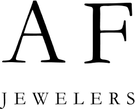Diamond Certification
We, at AF JEWELERS only work with the most reputable institution like G.I.A., Gubelin, etc to insure our clientele receive the best our industry has to offer.
This basic knowledge will not only unlock the mystery of a diamond's quality, it will help you understand a diamond's value and price.

Diamond Color In most diamonds, the term actually refers to the absence of color. The less color in the stone, the more desirable and valuable it is. Some of these differences are not visible to the naked eye, but directly impact the overall quality and price of the stone.
Diamond Clarity measures the amount, size and placement of internal 'inclusions,' and external 'blemishes.' Grades run from 'Flawless,' with virtually no imperfections, to 'Included,' which contain a significant number of imperfections.
Diamond Cut does not refer to a diamond's shape, but to the proportion and arrangement of its facets and the quality of workmanship. The amount of brilliance, sparkle and fire in a diamond is determined by cut. Grades range from 'Excellent' to 'Poor.'
Diamond Carat refers to a diamond's weight. Generally speaking, the higher the carat weight, the more expensive the stone. Two diamonds of equal carat weight, however, can have very different quality and price when the other three Cs are considered.
No matter how beautiful a diamond may look you simply cannot see its true quality. The 4Cs of diamond quality will provide you with the information you need to know the diamond's actual quality.
3) Insist On a Diamond Grading Report.
A diamond grading report from an unbiased, scientific source such as GIA is more than important information, it's proof of what you are purchasing. The differences in diamonds can be so subtle, even a trained jeweler can't recognize them without lab verification. Insist that any diamond you buy come with an indisputable verification of its quality.

